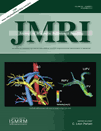Reliability of cerebral blood volume maps as a substitute for diffusion-weighted imaging in acute ischemic stroke
Abstract
Purpose:
To assess the reliability of cerebral blood volume (CBV) maps as a substitute for diffusion-weighted MRI (DWI) in acute ischemic stroke. In acute stroke, DWI is often used to identify irreversibly injured “core” tissue. Some propose using perfusion imaging, specifically CBV maps, in place of DWI. We examined whether CBV maps can reliably subsitute for DWI, and assessed the effect of scan duration on calculated CBV.
Materials and Methods:
We retrospectively identified 58 patients who underwent DWI and MR perfusion imaging within 12 h of stroke onset. CBV in each DWI lesion's center was divided by CBV in the normal-appearing contralateral hemisphere to yield relative regional CBV (rrCBV). The proportion of lesions with decreased rrCBV was calculated. After using the full scan duration (110 s after contrast injection), rrCBV was recalculated using simulated shorter scans. The effect of scan duration on rrCBV was tested with linear regression.
Results:
Using the full scan duration (110 s), rrCBV was increased in most DWI lesions (62%; 95% confidence interval, 48–74%). rrCBV increased with increasing scan duration (P < 0.001). Even with the shortest duration (39.5 s) rrCBV was increased in 33% of lesions.
Conclusion:
Because DWI lesions may have elevated or decreased CBV, CBV maps cannot reliably substitute for DWI in identifying the infarct core. J. Magn. Reson. Imaging 2012;36:1083–1087. © 2012 Wiley Periodicals, Inc.




